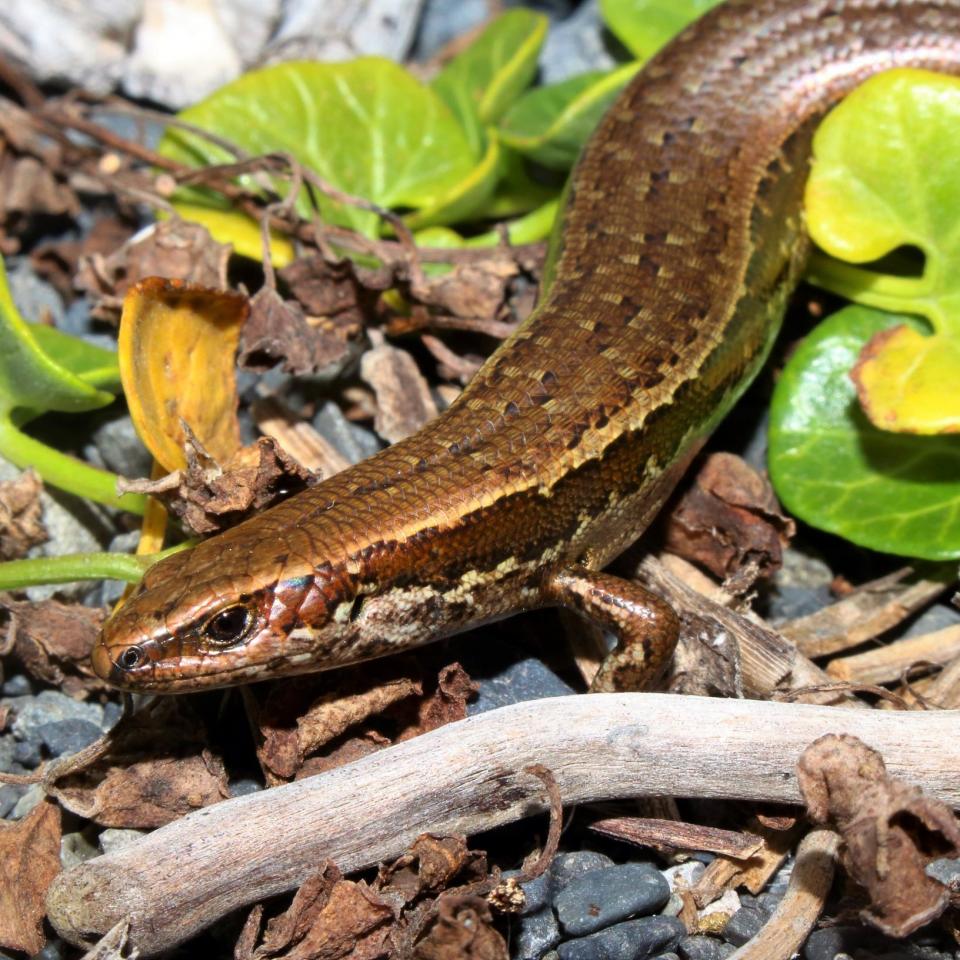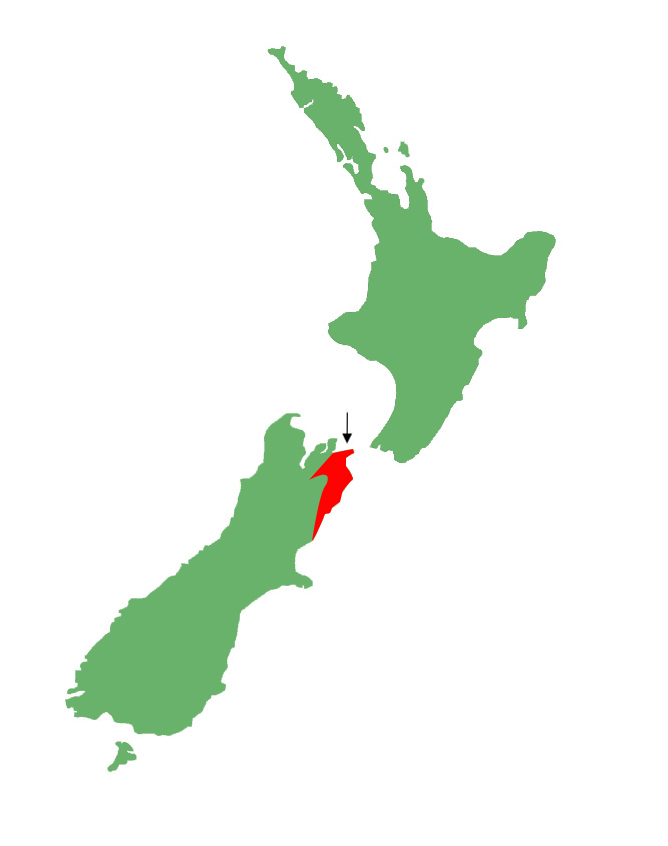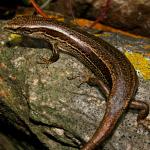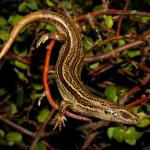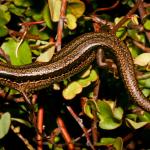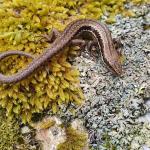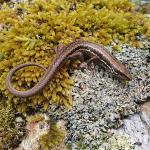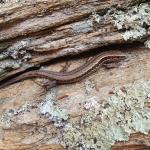- Home
- Herpetofauna Index
- Native
- Oligosoma Aff. Polychroma Clade 2
Oligosoma aff. polychroma Clade 2
Waiharakeke grass skink
Oligosoma aff. polychroma Clade 2
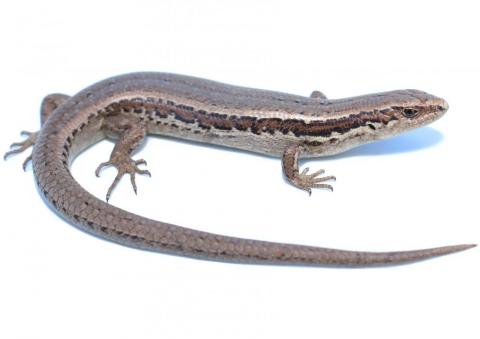
Length: SVL up to 80mm, with the tail being equal to or slightly longer than the body length
Weight: unknown
Description
Formerly regarded as the 'common skink' (which has now been split into five separate species), Waiharakeke grass skinks are abundant within their range and commonly encountered in both native or modified (agricultural) habitats.
Similar in appearance to other members of the grass skink complex. Head has a short, blunt snout. Pattern can be highly variable. The dorsal surfaces are often various shades of brown with cream or pale-brown dorsolateral stripes which may be smooth-edged or serrated, a mid dorsal stripe (when present) usually extends down the tail. Flanks have a broad dark brown lateral stripe, often edged with black and bordered below by a cream-coloured stripe which may be smooth or crenulated. A pale stripe runs down the anterior surface of the forelimb. The ventral surface is variously coloured shades of grey, brown, or yellow, without speckling.
Life expectancy
Unknown.
Distribution
Occurs in the South Island from the eastern Marlborough Sounds (including numerous islands) southwards along the Kaikoura Coast and in the Wairau Valley.
Ecology and habitat
Waiharakeke grass skinks are diurnal, bold and strongly heliothermic. They can often be seen out basking fully exposed in sunny areas.
In common with other grass skinks the species occupies a wide range of habitat types preferring open areas including coastal vegetation, rock piles, grassland, flaxland, shrubland, screes, forest margins tussock and modified urban / suburban habitats. Often takes refuge in dense vegetation or under rocks and logs when not active.
Social structure
Thought to be largely solitary, but often lives in high-density colonies where multiple individuals can be observed basking in close proximity.
Breeding biology
Waiharakeke grass skinks reach maturity in around two years, mating has been reported to occur in March, and females reproduce annually giving birth to litters of up to six juveniles in mid-to-late summer (January- February).
Diet
Waiharakeke grass skinks are active hunters and consume a wide range of small invertebrates such as spiders, insects, isopods and molluscs. They also consume the berries / fruit from native plants.
Disease
Unknown.
Conservation strategy
Waiharakeke grass skinks are regarded as "At Risk - Declining."
No specific conservation strategy has been developed for Waiharakeke grass skinks although they are secure on several pest-free islands such as the Brother's Islands and Motuara Island in the eastern Marlborough Sounds.
Interesting notes
Waiharakeke grass skinks are part of a cryptic species complex which includes the northern grass skink (Oligosoma polychroma), south Marlborough grass skink (Oligosoma aff. polychroma Clade 3), Canterbury grass skink (Oligosoma aff. polychroma Clade 4), and southern grass skink (Oligosoma aff. polychroma Clade 5). The various species are regionally distributed, similar in both appearance and habit, and were once regarded as a single highly variable species - the 'common skink'. There are currently no known morphological features to distinguish Waiharakeke grass skinks from the other species within the complex.
References
Hitchmough, R.A., Barr, B., Lettink, M., Monks, J., Reardon, J., Tocher, M., van Winkel, D., Rolfe, J. (2016). Conservation status of New Zealand reptiles, 2015; New Zealand threat classification series 17. Wellington: New Zealand Department of Conservation.
Jewell, T. (2011). A photographic guide to reptiles and amphibians of New Zealand. Auckland: New Holland Publishing.
Robb, J. (1986). New Zealand Amphibians & Reptiles (Revised). Auckland: Collins, 128 pp.
van Winkel, D., Baling, M. & Hitchmough, R. (2018). Reptiles and Amphibians of New Zealand: A field guide. Auckland: Auckland University Press, 376 pp.

